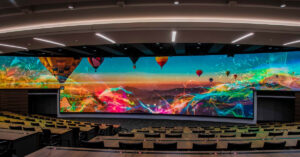
Video Building Block: Color Space
Published October 23, 2020

Last week we talked about bit depth, which determines the number of numerical values each color channel can have. This week, we explore the other half of color for video; color model and color space!
Before we go any further, we’re getting deeper into color theory territory. Artists and technicians study for years to understand and implement color theory properly. This is only the briefest of introductions, specifically for displays.
What is color model?
Color model is the cipher by which we turn actual colors into numbers for recording and displaying colors. The most common being RGB and CMYK. While CMYK is used for printing, RGB is used in camera, displays, and all things internet because it matches human perception the best.
What is color space?
Color space is a subset of the color model. It defines the exact quality of the red, green, and blue colors used to create the complete gamut of colors.
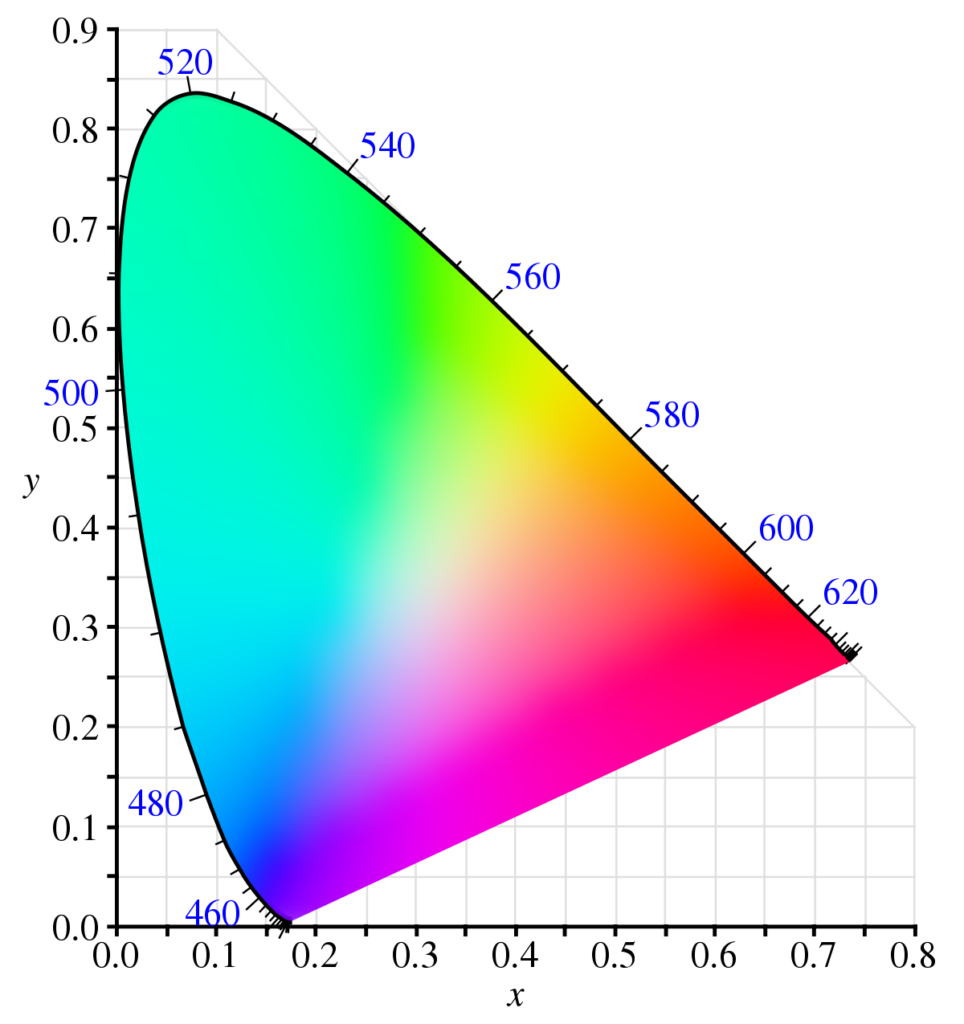
Visual Spectrum of Light
To further understand, look at the visible spectrum of light, as graphed by scientists back in 1931. Thanks to the sun, these are all the possible colors a human eye can perceive.
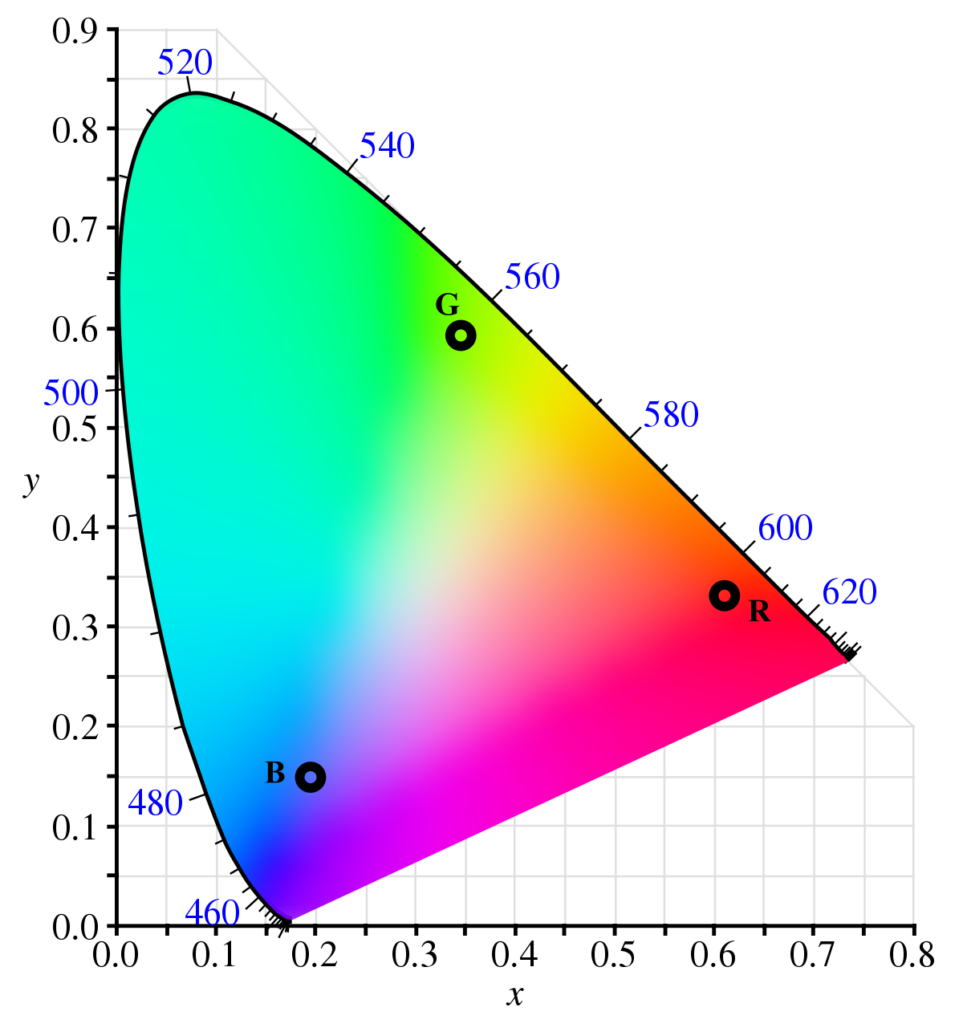
Primary Colors
Displays, even modern ones, do a poor job of truly replicating all the possible colors. The sun emits all the colors at once but a display has three LEDs of one color per pixel. The quality of each depends on the material used to create these LEDs. Alone, these are the primary colors
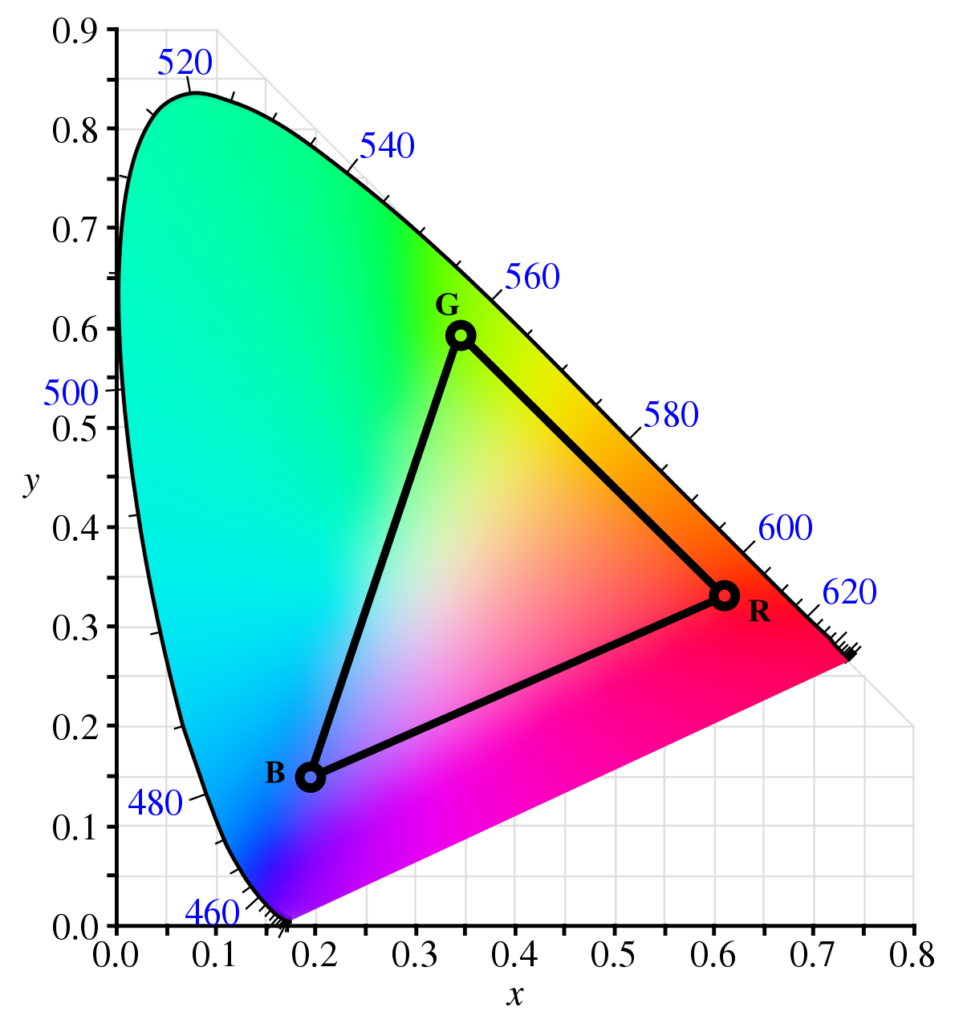
Color Gamut
By varying the intensities of the three LEDs, we can create the other colors. Drawing lines between the three points, we show the possible color space when using the three RGB LEDs in different proportions
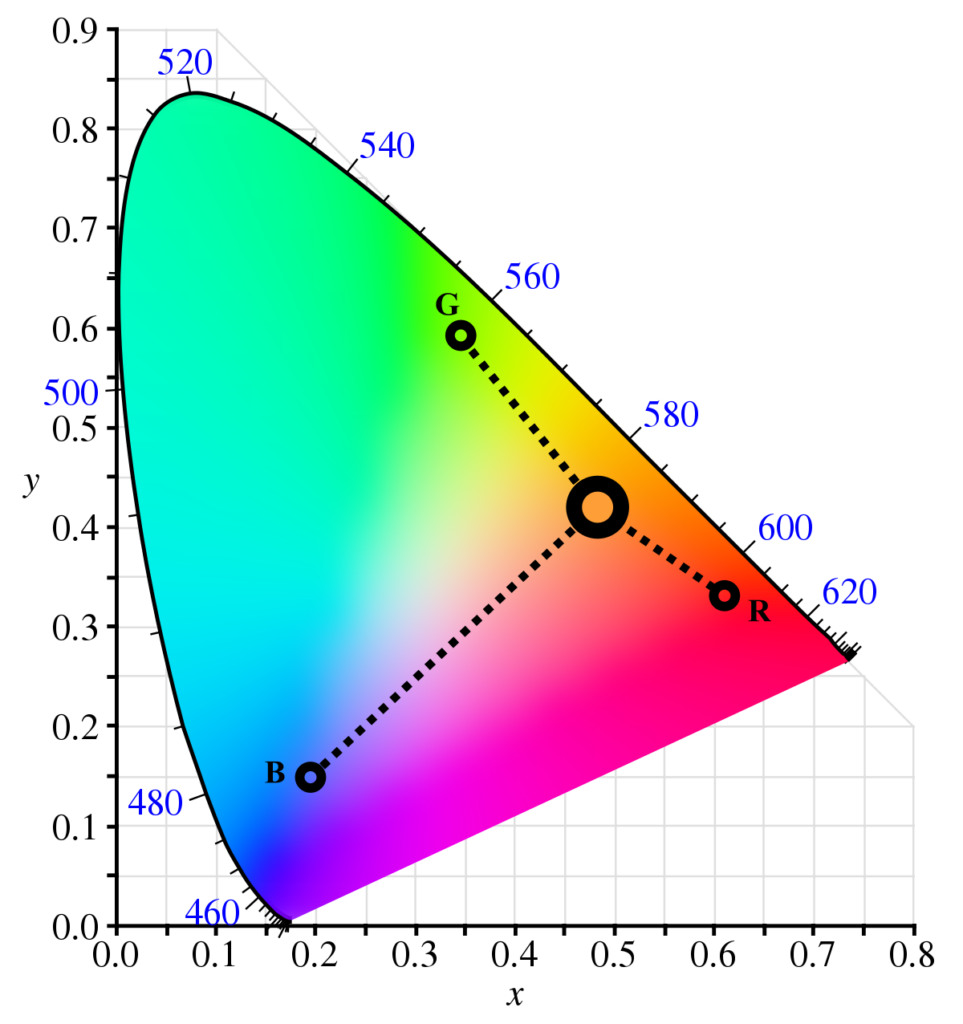
Three = One
RGB is an additive color model. For example, let’s say we wanted to make the color orange. We set red to 80%, green to 45%, and blue to 10% and the pixel shows as orange
Why does color space matter?
Remember color model and color space are the ciphers for displaying numerical values as colors. Some manufacturers can interpret that data differently. While there are standards, they are reference points for manufacturers to aim for and therefore device color outputs can vary. Unless you’re working in professional film or digital art, you don’t have to worry too much.
What are the color space standards?
sRGB, the first standard, was created by Microsoft and HP back in the 1990s for computer graphics and the internet. The current standard for HDTV, Rec. 709, expands on sRGB slightly. With advances in technology, the UHDTV standard, Rec.2020, blows the other color spaces out of the water.

How do I know what color space my display is?
A displays color space is dependent on the manufacturer and is often found within the technical data sheet. While they should be calibrating their displays to the the above standards, some manufacturers use their own standards or don’t calibrate at all.
Bottom Line: Displays interpret the color from a source video differently depending on who made them. If it matters to you, make sure they align for true representation of colors.
Sources & Further Reading:
- https://www.unravel.com.au/understanding-color-spaces
- https://wolfcrow.com/what-is-color-color-bit-depth-and-a-color-model/
- https://en.wikipedia.org/wiki/Color_space
Putting together a video system or live stream? We’ll take care of the technical details for a professional look so you can connect with your people. Send us a message!
Want to get these articles a week in advance with extra deals and news? Sign up for our weekly newsletter, the Archer’s Quiver, and we’ll send you a FREE AV guide.
Get Expert AV Assistance
Latest Blogs
About Arrow AV Group
We are a premiere audiovisual integration firm serving corporate, government, healthcare, house of worship, and education markets with easy-to-use solutions that drive success. Family-owned and operated from Appleton, WI for over 35 years.


